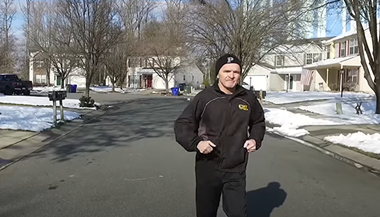Olecranon Fracture (Elbow Fracture)
What You Need to Know Olecranon Fracture
-
Olecranon fractures are common and occur at the pointy end of the elbow.
-
This type of fracture is often caused by a direct blow to the elbow or from landing on your elbow.
-
Symptoms of an olecranon fracture may include pain, tenderness, swelling and the inability to straighten the elbow or pain while straightening the elbow.
-
Depending on the degree and type of fracture, treatment may include the use of a sling or surgery to help hold the bones in place while they heal.
What is an olecranon fracture?
The elbow joint is made up of three bones, the humerus (upper arm bone), ulna (first of two forearm bones on pinky side) and radius (second of two forearm bones on thumb side) and is held together by ligaments, muscle and tendons. It bends and straightens like a hinge, but it is also important for rotation of the forearm; that is, the ability to turn our hands up (like accepting change from a cashier) or down (like typing or playing piano).
An olecranon fracture is a break in the “pointy bone” of your elbow that sticks out when you bend your arm, which is actually the end of the ulna. This type of fracture is common and usually occurs in isolation (there are no other injuries) but can also be a part of a more complex elbow injury.
An olecranon fracture can occur through a direct blow (i.e., fall on the elbow or direct impact from an object) or indirect blow. The latter is mostly secondary to landing on an outstretched arm.
What are the symptoms of an elbow fracture?
-
Sudden intense pain with inability to straighten the elbow
-
Swelling and bruising around the elbow
-
Tenderness to touch
-
Pain with movement of the joint
What is the treatment for olecranon fracture?
There are usually two treatments for elbow fractures depending on the fracture pattern, displacement and joint involvement.
Nonsurgical Treatment
A splint or sling is used to hold the elbow in place during the healing process. The doctor will closely monitor the healing of the fracture and have you frequently return to clinic for X-rays. If the fracture is not displaced (out of place), you may be allowed to start gently moving the elbow with the assistance of a physical therapist after a few weeks. Weight lifting and bearing will not be allowed for several weeks. Because of the prolonged splinting time, the elbow may become very stiff and require a longer period of therapy after the cast is removed to regain motion. For this reason, nonsurgical treatment is rarely recommended.
Surgical Treatment
If the fracture is displaced or the fracture is open (bone is exposed through the skin), surgery is usually necessary. Surgery is often performed through an incision over the back of the elbow that allows full access to the fractures. The pieces are then put together and held in place in different ways: pins/wires, screws only or plates and screws. Early motion begins immediately following surgery and usually is assisted by occupational therapy or physical therapy.






